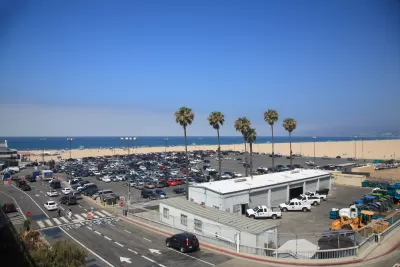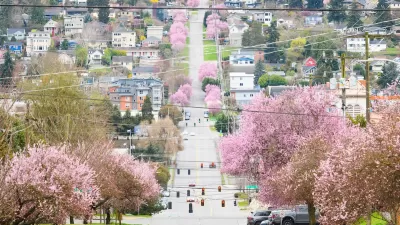"Big Asphalt" has compromised our health, safety, and welfare—but we can defeat it if we try.

In America we have 2.5 million miles of paved roads, and an estimated 800 million parking spaces. Thanks to the "asphalt-industrial machine," which is like a Borg that exists to expand itself, we have the largest asphalt paving industry in the world, producing 400 million tons annually.
The paving promotes more driving, which in turn raises the demand for paving. In the last 100 years we paved a total area that is half the size of Pennsylvania, and this requires ongoing service and maintenance, which feeds the industry perpetually.
American industrial and professional sectors have evolved to serve the machine. Big players are the asphalt, aggregate, and ready-mix producers, and the paving contractors. These include Oldcastle Materials and The Koch Industries—not household names, because you don't drive to the big box store to buy asphalt. You drive and park on asphalt. Our retail industry, which used to serve neighborhoods and communities, now depends on asphalt. The biggest corporation in the world, Walmart, would not exist at anywhere near its current size without Big Asphalt.
The automobile and trucking industries also are built on pavement. The oil industry feeds the asphalt-industrial machine.
Transportation engineers have long been co-opted by the machine, as have transportation planners and Departments of Transportation (DOTs). These groups apply rules and standards that supposedly promote safety, but mostly serve Big Asphalt—which harms people in many ways:
FULL STORY: They paved paradise, put up a parking lot …

Alabama: Trump Terminates Settlements for Black Communities Harmed By Raw Sewage
Trump deemed the landmark civil rights agreement “illegal DEI and environmental justice policy.”

Planetizen Federal Action Tracker
A weekly monitor of how Trump’s orders and actions are impacting planners and planning in America.

The 120 Year Old Tiny Home Villages That Sheltered San Francisco’s Earthquake Refugees
More than a century ago, San Francisco mobilized to house thousands of residents displaced by the 1906 earthquake. Could their strategy offer a model for the present?

Ken Jennings Launches Transit Web Series
The Jeopardy champ wants you to ride public transit.

BLM To Rescind Public Lands Rule
The change will downgrade conservation, once again putting federal land at risk for mining and other extractive uses.

Indy Neighborhood Group Builds Temporary Multi-Use Path
Community members, aided in part by funding from the city, repurposed a vehicle lane to create a protected bike and pedestrian path for the summer season.
Urban Design for Planners 1: Software Tools
This six-course series explores essential urban design concepts using open source software and equips planners with the tools they need to participate fully in the urban design process.
Planning for Universal Design
Learn the tools for implementing Universal Design in planning regulations.
Clanton & Associates, Inc.
Jessamine County Fiscal Court
Institute for Housing and Urban Development Studies (IHS)
City of Grandview
Harvard GSD Executive Education
Toledo-Lucas County Plan Commissions
Salt Lake City
NYU Wagner Graduate School of Public Service



























